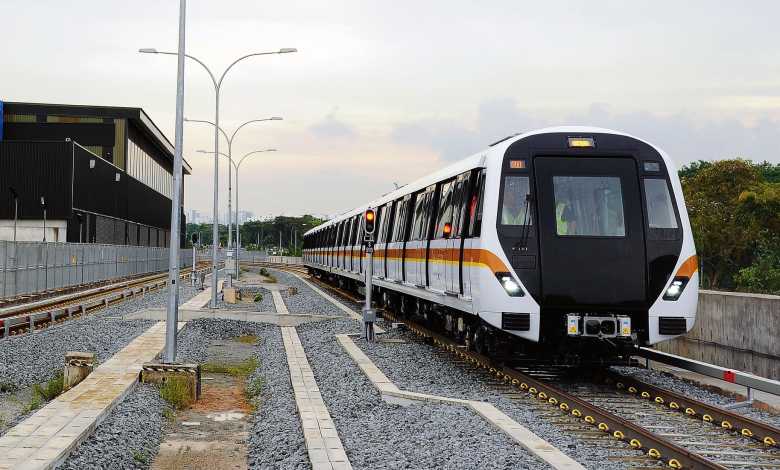3S’s of Singapore’s Mass Rapid Transit – Safe, Smart, and Sustainable

The Mass Rapid Transit or MRT of Singapore is the backbone of the country’s public transportation system. It is fast, efficient, and clean. It helps nearly 3 million people travel from one place to another daily. Being a major component of the rail network, the government expanded the MRT network from a 67km track system in 1995 to 230km in 2020. The Land Transportation Authority (LTA) is planning to expand the network to a 360km system by 2030.
According to a 2018 report by consulting firm McKinsey, Singapore has one of the safest, efficient, affordable, accessible, and most ecologically sustainable public transport systems. To make Singapore a livable and vibrant city, the government develops innovative strategies and policies for the transport system including MRT. From a smart ticketing system, safe infrastructure to environmental protection, the government, LTA, and MRT operators (SMRT and SBS Transit) have helped to make Singapore’s mass rapid transit system safe, smart, and sustainable (3S’s). Let’s check out the 3S’s of Singapore’s mass rapid transit in detail.
- MRT is Safe
Safety is the first priority of authorities operating, managing, and maintaining MRT trains, tracks, and infrastructure. MRT offers safety at all levels. From travelling in MRT trains, using escalators and stations to track systems, MRT is a safe and reliable transportation system. Singapore’s MRT system has implemented several safety measures to minimize casualties and injuries with the development and improvement of infrastructures and policies. The MRT system has fire and smoke detection systems in trains, follows fire prevention standards, installed platform screen doors and gates, and refurbished escalators at many stations.
SMRT trains and stations are renowned for being really safe. SMRT is a leading multi-modal public transport operator in Singapore. To provide best-in-class safety in MRT, SMRT following top-down and bottom-up approaches.
- It utilizes the Track Access Management System (TAMS) for optimising track access resources and enhancing safety.
- There is an Escalator Safety Committee at SMRT that formulates strategies to reduce escalator injuries. The organisation also conducts public safety road shows on how to safely use MRT facilities.
- SMRT collaborates with LTA, Singapore Civil Defence Force (SCDF) and Singapore Police Force (SPF) to test emergency responses during major incidents.
- The safety and security efforts of SMRT have helped the operator to earn the “Safe Rail Line of the Year – Certificate of Excellence” award at the 21st Annual Safety Award Convention from LTA.
- MRT is Smart
Smartness in urban mobility involves the implementation of smart technologies to improve operational efficiency, enhance passenger experiences, and provide environmental sustainability. The department of Innovation and Smart Mobility at Singapore’s Land Transport Authority (LTA) is responsible for driving smart solutions in the public transportation system.
- The MRT network follows the Singapore Standard for Contactless ePurse Application (CEPAS) system. The ticketing system at all MRT stations allows riders to use the EZ-Link and NETS FlashPay contactless smart cards for paying for their rides.
- LTA will use drones and artificial intelligence to predict when they need to repair trains and tracks.
- SMRT and McLaren Applied are working together on a proof-of-concept intelligent maintenance solution for SMRT’s fleet. SMRT has developed rail condition-monitoring sensors that help to minimize commuter service disruption.
SMRT is Sustainable
A sustainable transit system is one that provides safe and environmentally harmless transportation services. It should be affordable and efficient. It should keep the production of emissions to a minimum level. It should keep a check on the usage of natural resources and land. It should also offer financial sustainability going forward.
- A ‘Green Rail Transit System’ plan has been implemented to provide energy saving measures in MRT Stations.
- The government and various agencies work together to optimise land use for the construction of transportation systems.
- The government promotes the use of public transportation instead of personal vehicles to reduce the road vehicle population as well as pollution.
- As part of the MRT expansion plan, sustainable MRT stations have been built with LED lighting, water recycling option, and solar panels.
- SMRT follows people-centric environmental sustainability practices. It has formed four committees to look after environmentally sustainable developments such as a reduction in energy usage, conserving water, managing waste, and advocating for green MRT.
- SMRT has set its sustainability targets. It will try to reduce energy and carbon footprint consumption by 5%, water consumption by 10%, and paper consumption by 20%.
On the sustainability of the MRT network, SMRT Group CEO Neo Kian Hong says, “Our focus on reliability, sustainability and continuous improvement are key to the turnaround of SMRT. SMRT Trains has achieved 1 million Mean Kilometres Between Failure (MKBF) for all our Train Lines and we are now amongst the best performing metros in the world.”
Conclusion
Singapore’s MRT system is hailed as a reliable, efficient, and affordable way to travel from one place to another. It is smart, safe, and sustainable. The government, LTA, SMRT, and several agencies have helped to make MRT the best transportation system in the world.
About the Author
Mr. Lee is a professor of mechanical engineering in a college in Singapore. He has studied transportation systems around the world and loves to write about the best things in each system. From SMRT, MRT, New York subway to London metro, he has written several articles on urban mobility systems.




